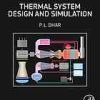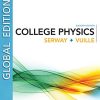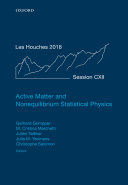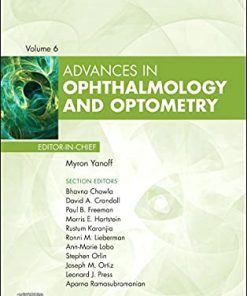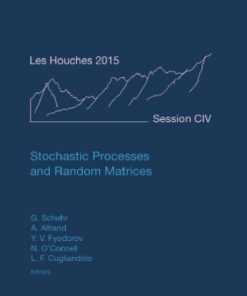Integrability from statistical systems to Gauge theory 1st edition by Patrick Dorey, Gregory Korchemsky, Nikita Nekrasov 0192563316 9780192563316
$50.00 Original price was: $50.00.$25.00Current price is: $25.00.
Integrability: from statistical systems to Gauge theory 1st edition by Patrick Dorey, Gregory Korchemsky, Nikita Nekrasov – Ebook PDF Instant Download/DeliveryISBN: 0192563316, 9780192563316
Full download Integrability: from statistical systems to Gauge theory 1st edition after payment.
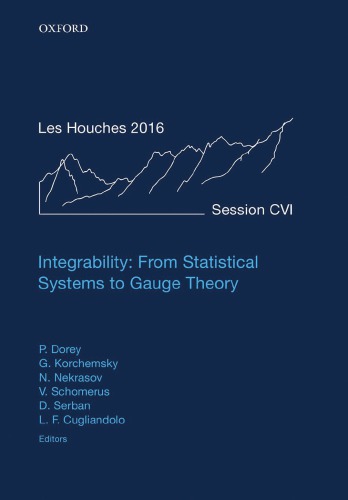
Product details:
ISBN-10 : 0192563316
ISBN-13 : 9780192563316
Author : Patrick Dorey, Gregory Korchemsky, Nikita Nekrasov
This volume, 106 of the Les Houches Summer School series, brings together applications of integrability to supersymmetric gauge and string theory. The book focuses on the application of integrability and problems in quantum field theory. Particular emphasis is given to the exact solution of planar N=4 super-Yang-Mills theory and its relation with string theory on the one hand, and the exact determination of the low-energy physics of N=2 super-Yang-Mills theories on the other; links with other domains are also explored. The purpose of the Les Houches Summer School was to bring together young researchers and specialists from statistical physics, condensed matter physics, gauge and string theory, and mathematics, to stimulate discussion across these different research areas.
Integrability: from statistical systems to Gauge theory 1st Table of contents:
1.1 Potts model
1.1.1 Spin representation
1.1.2 Fortuin–Kasteleyn cluster representation
1.1.3 Duality of the partition function
1.1.4 Special cases
1.1.4.1 Bond percolation
1.1.4.2 Trees and forests
1.1.5 Loop representation
1.1.6 Vertex model representation
1.1.7 Six-vertex model
1.2 Quantum integrability
1.2.1 R-matrix
1.2.2 Spectral parameter
1.2.3 Transfer matrix
1.2.4 Commuting transfer matrices
1.2.5 Six-vertex model
1.2.6 Temperley–Lieb algebra
1.2.6.1 Integrable R-matrix in the loop representation
1.2.6.2 Back to the vertex model
1.2.7 Spectral parameter and anisotropy
1.2.8 Spin chain Hamiltonian
1.3 Algebraic Bethe ansatz
1.3.1 Monodromy matrix
1.3.2 Co-product and Yang–Baxter algebra
1.3.3 Six-vertex model
1.3.3.1 Co-product
1.3.3.2 Commutation relations
1.3.3.3 Algebraic Bethe ansatz
1.3.4 Coordinate Bethe ansatz
1.3.5 Energy and momentum
1.4 Thermodynamic limit
1.4.1 Phase diagram
1.4.2 Thermodynamic limit for �<1
1.4.2.1 Location of the quasi-momenta
1.4.2.2 Transformation to a set of real equations
1.4.2.3 Continuum limit
1.4.3 Free energy for −1< A <1
1.4.3.1 Difference kernel transformation
1.4.3.2 Parameterization
1.4.3.3 Solution by Fourier integrals
1.4.4 Elementary excitations
1.4.4.1 Zero magnetization
1.4.4.2 Non-zero magnetization
1.4.5 Relation with the Coulomb gas formalism
1.5 Nineteen-vertex models
1.5.1 R-matrices
1.5.2 Algebraic Bethe ansatz for the IK model
1.5.2.1 Regimes
1.5.3 Continuum limit of regime III
1.5.3.1 Black hole sigma model
1.5.3.2 Theta point of collapsing polymers
References
2. A guide to two-dimensional conformal field theory
Chapter Contents
Preface
2.1 Conformal symmetry
2.1.1 States
2.1.2 Fields and correlation functions
2.1.3 Conformal Ward identities
2.1.4 A mathematical reformulation
2.1.5 Variations of insertion points
2.1.5.1 Completing the definition of conformal blocks
2.1.5.2 Consequences
2.1.5.3 Geometric meaning
2.1.6 Conformal blocks versus vertex operators
2.1.7 Localizing conformal blocks+
2.1.8 Higher genus conformal blocks+
2.1.8.1 Conformal Ward identities
2.1.8.2 Variations of the conformal blocks
2.1.8.3 Projective flatness
2.1.9 Extensions of conformal symmetry++
2.1.9.1 Examples
2.1.9.2 Vertex operator algebras++
2.2 Bootstrap
2.2.1 Gluing construction
2.2.2 Computing conformal blocks+
2.2.2.1 Free field representation+
2.2.2.2 Recursion relations and AGT representation++
2.2.3 Crossing symmetry
2.2.4 Fusion and braiding
2.2.5 Rational and non-rational minimal models+
2.2.5.1 Factorization
2.2.5.2 Functional equations
2.2.5.3 Explicit solutions
2.2.5.4 Solutions for c ≤ 1: (generalized) minimal models
2.2.5.5 Solution for c > 1: Liouville theory
2.2.6 Higher genus+
2.2.6.1 Gluing construction
2.2.6.2 Modular transformation
2.2.6.3 Modular invariance of physical correlation functions
2.2.6.4 Chiral modular bootstrap++
2.2.7 Verlinde loop operators+
2.2.8 Extended chiral symmetry++
2.2.8.1 Relation to braided tensor categories
2.2.8.2 Rationality and modular tensor categories
2.2.8.3 Seriously non-rational cases
2.3 Relations to integrable models+
2.3.1 Isomonodromic deformations and tau-function
2.3.2 The Riemann–Hilbert problem
2.3.3 Relation to free fermion CFT and infinite Grassmannians
2.3.3.1 Free fermions
2.3.3.2 Free fermion conformal blocks from solutions to the Riemann–Hilbert problem
2.3.3.3 Explicit construction of conformal blocks for the free fermion VOA
2.3.3.4 Chiral partition functions as tau-functions
2.3.3.5 Isomonodromic flows in infinite Grassmannians
2.3.3.6 Discussion
2.3.4 Trace coordinates for moduli spaces of flat connections
2.3.5 Solving the Riemann–Hilbert problem using CFT
2.3.6 Non-abelian fermionization
2.3.7 Implications for bosonic CFT
2.3.8 Further relations to integrable models++
2.3.8.1 Semiclassical limit of Virasoro conformal blocks and the Garnier system
2.3.8.2 Yang’s functions for the Hitchin systems
2.3.8.3 Integrable structure of conformal field theories
Acknowledgements
References
3. Lectures on the holographic duality of gauge fields and strings
Chapter Contents
Preface
3.1 Preamble about gauge fields
3.1.1 Basics
3.1.2 Yang–Mills theory
3.2 The Wilson loop
3.3 The large N expansion
3.3.1 Large N factorization
3.4 D branes, black branes, and the Maldacena conjecture
3.4.1 D3 branes and black D3 branes
3.4.2 Weakly coupled string theory with D3 branes
3.4.3 The black D3 brane solution of IIB super-gravity
3.4.4 The Maldacena conjecture
3.5 N = 4 superconformal quantum field theory
3.5.1 PSU(2,2|4)
3.5.1.1 Poincaré algebra
3.5.1.2 Conformal symmetry
3.5.1.3 Supersymmetry
3.5.1.4 Superconformal algebra
3.5.1.5 Short representations
3.6 Holographic Wilson loops
3.6.1 Straight line and circle Wilson loop
3.6.2 Wilson loops and heavy quarks
3.7 Epilogue
References
4. Introduction to scattering amplitudes
Chapter Contents
Preface
4.1 Kinematics
4.2 Amplitudes
4.3 Factorization
4.4 On-shell (BCFW) recursion relations
References
5. Integrability in sigma-models
Chapter Contents
Preface
5.1 Introduction
5.2 Geometry
5.3 Principal chiral field
5.4 Symmetric cosets
5.5 B-field and topology
5.5.1 Theta-term
5.5.2 Wess–Zumino term
5.6 Quantum sigma-models
5.7 O(N) model: large N
5.8 O(N) model: exact solution
5.9 Crash course in superalgebras
5.10 Supercoset sigma-models
Acknowledgements
References
6. Integrability in 2D fields theory/sigma-models
Chapter Contents
Preface
6.1 Liouville theorem
6.1.1 Free particle on an ellipsoid ( Jacobi problem)
6.1.2 The Euler top
6.2 Free particle on a group manifold
6.2.1 Spherical top. Free particle on the 3-sphere
6.2.2 General case
6.3 Non-linear sigma model
6.4 Principal chiral field
6.5 Integrable examples of NLSM
6.5.1 Anisotropic SU(2) PCF
6.5.2 O(N) NLSM
6.5.3 Fateev NLSM
6.5.4 The sausage
6.6 The cigar
6.6.1 General solution of the Cauchy problem
6.6.2 Poisson structure
6.6.3 Integrable structures
6.7 B-field
6.7.1 WZWN model
6.7.2 NLSM with B-field
6.8 Integrable examples of NLSM with B-field
6.8.1 Modified anisotropic SU(2) PCF
6.8.2 Modified Fateev model
6.9 Wick rotation
6.10 Free scalar field on a cylinder
6.11 General structure of the Hilbert space of 2D CFT
6.12 Dimensional transmutation in PCF
6.13 RG flow equations
6.14 String equations
6.15 The quantum cigar
6.15.1 W-algebra
6.15.2 Highest weight representations
6.15.3 Involutive local IM
6.15.4 The sine-Liouville model
6.15.5 Space of states
6.15.6 W-primary fields
6.16 The quantum sausage
6.16.1 Dual form of the sausage NLSM
6.16.2 Hilbert space of the sausage NLSM
6.16.3 Small-R limit in the sausage NLSM
6.17 Other integrable structures in the cigar NLSM
Acknowledgements
References
7. Applications of integrable models in condensed matter and cold atom physics
Chapter Contents
Preface
7.1 Physical realizations of integrable models
7.1.1 Anisotropic crystals
7.1.1.1 Effective Hamiltonians from strong coupling expansions
7.1.1.2 Field theory description of the low energy limit
7.1.2 Cold atoms in optical traps
7.1.3 Deviations from integrability
7.1.4 Some standard experimental probes
7.1.4.1 Equilibrium thermodynamics
7.1.4.2 Dynamical response functions in equilibrium
7.1.4.3 Non-equilibrium protocols
7.2 Eigenstates of integrable and generic local Hamiltonians
7.2.1 Integrable models and conservation laws
7.3 Macro states in the spin-1/2 Heisenberg chain
7.3.1 Macro states
7.3.2 Thermal equilibrium
7.3.2.1 Zero temperature limit
7.3.2.2 Infinite temperature limit
7.3.2.3 Negative ‘temperatures’
7.3.2.4 Equilibrium thermodynamics
7.3.3 Atypical states with finite entropy densities
7.3.3.1 Local properties of atypical states
7.4 Quantum quenches
7.4.1 Thermalization
7.4.2 Generalized thermalization
References
8. Introduction to integrability and one-point functions in N = 4 supersymmetric Yang–Mills theory
Chapter Contents
8.1 Introduction
8.2 N = 4 supersymmetric Yang–Mills theory and the spectral problem
8.2.1 Action and symmetries
8.2.1.1 Action
8.2.1.2 Symmetries
8.2.1.3 Correlation functions
8.2.2 Two-point functions and the spectral problem
8.2.2.1 Spin chains
8.2.2.2 Other sectors
8.3 The integrable Heisenberg spin chain in N = 4 supersymmetric Yang–Mills theory
8.3.1 One loop
8.3.2 Higher loop orders
8.3.3 Beyond the planar limit
8.4 N = 4 supersymmetric Yang–Mills theory with a defect, one-point functions, and integrability
8.4.1 N = 4 supersymmetric Yang–Mills theory with a defect
8.4.1.1 Symmetries
8.4.1.2 Correlation functions
8.4.1.3 Vacuum expectation values
8.4.1.4 Representation of the algebra of SU(2)
8.4.2 Tree-level one-point functions in the SU(2) sector
8.4.2.1 The matrix product state
8.4.2.2 Generalities
8.4.2.3 Vacuum
8.4.2.4 One-point functions for k=2
8.4.2.5 Néel state
8.4.2.6 General k
8.4.3 One-loop one-point functions in the SU(2) sector
8.5 Outlook
Acknowledgements
References
9. Spectrum of N = 4 supersymmetric Yang–Mills theory and the quantum spectral curve
Chapter Contents
9.1 Introduction
9.2 From harmonic oscillator to QQ-relations
9.2.1 Inspiration from the harmonic oscillator
9.2.2 SU(2)-Heisenberg spin chain
9.2.3 Nested Bethe ansatz and QQ-relations
9.2.3.1 Bosonic duality
9.2.3.2 Fermionic duality in SU(N|M)
9.2.4 QQ-relations for PSU(2,2|4) spin chain
9.3 Classical string and strong coupling limit of QSC
9.3.1 Classical string action
9.3.2 Classical integrability
9.3.3 Quasimomenta and the strong coupling limit of QSC
9.4 QSC formulation
9.4.1 Main QQ-relations
9.4.2 Large u asymptotic and the quantum numbers of the state
9.4.3 Analytic structure of Q-functions
9.4.4 Gluing conditions
9.4.5 Left–right symmetric subsector
9.5 QSC—analytic examples
9.5.1 sl(2) sector
9.5.2 Analytic continuation in S
9.5.3 Slope function
9.6 Solving QSC at finite coupling numerically
9.6.1 Description of the method
9.6.2 Implementation in Mathematica
9.7 Applications, further reading, and open questions
Acknowledgements
References
10. Three-point functions in N = 4 supersymmetric Yang–Mills theory
Chapter Contents
Preface
10.1 Three-point functions at weak coupling
10.1.1 Motivations
10.1.2 Brief review of N = 4 supersymmetric Yang–Mills theory
10.1.2.1 Symmetries and field contents
10.1.2.2 Two- and three-point functions
10.1.2.3 Single-trace operators and the spin chain
10.1.3 BPS correlators at tree level
10.1.3.1 Two-point function
10.1.3.2 Three-point function
10.1.4 Non-BPS three-point functions at tree level
10.1.4.1 Set-up
10.1.4.2 Single-magnon state
10.1.4.3 Two-magnon state
10.1.4.4 Generalization to multi-magnon state
10.1.5 Physical interpretation
10.2 Hexagon approach
10.2.1 Asymptotic three-point function
10.2.2 Symmetries of two-point functions
10.2.2.1 Global symmetry
10.2.2.2 ‘Large gauge’ symmetry
10.2.2.3 Centrally extended psu(2|2)
10.2.3 Symmetries of three-point functions
10.2.3.1 Twisted translations and diagonal psu(2|2)
10.2.3.2 Adding ‘internal motions’
10.2.4 Constraining the hexagon form factors from symmetries
10.2.4.1 One-particle form factor
10.2.4.2 Two-particle form factor
10.2.4.3 Multi-particle form factor
10.2.5 Constraints from integrability
10.2.5.1 Watson equation
10.2.5.2 Crossing/mirror transformations
10.2.5.3 Decoupling
10.2.5.4 A solution to the constraints
10.2.6 Finite-size correction
10.3 Conclusion and prospects
Acknowledgements
References
11. Localization and N = 2 supersymmetric field theory
Chapter Contents
11.1 Gauge theory
11.1.1 Yang–Mills theory
11.1.2 Electro-magnetic duality
11.2 Kähler, special Kähler, and hyperKähler geometry
11.2.1 Complex manifold
11.2.2 Kähler manifold
11.2.3 HyperKähler
11.2.4 Special Kähler
11.2.5 Integral special Kähler
11.3 Supersymmetry
11.3.1 SuperPoincaré symmetry
11.3.2 The spinor modules of Spin(V)
11.3.3 Lie superalgebras
11.3.4 Poincaré superalgebras
11.3.5 Clifford algebra
11.3.6 Invariant bilinear form on S
11.3.7 Minimal supersymmetry
11.4 Supersymmetric gauge theory
11.4.1 Minimal super Yang–Mills: N = 1 SYM
11.4.2 Minkowski flat space-time
11.4.3 Euclidean space-time and complexification
11.4.4 Off-shell closure of the supersymmetry algebra
11.4.5 The N = 1 supersymmetry algebra in d = 4 in superspace
11.4.6 The 4d N = 2 susy from 6d N = 1 susy
11.4.7 The 4d N = 2 vector mutliplet
11.4.8 The 4d N = 2 hypermultiplet
11.4.9 Lagrangian N = 2 gauge theories
11.4.10 Lagrangian N = 2 quiver gauge theories
11.5 Seiberg–Witten integrable system
11.5.1 N = 2 gauge theory on R3 ×R
11.5.2 Spectral curves
11.5.3 Class S theories and Hitchin system
11.5.4 Quiver theories and multiplicative Hitchin system (periodic monopoles)
People also search for Integrability: from statistical systems to Gauge theory 1st:
uniform integrability
riemann integrability
does continuity imply integrability
lebesgue criterion for riemann integrability
cauchy criterion for integrability
Tags: Integrability, statistical systems, Gauge theory, Patrick Dorey, Gregory Korchemsky, Nikita Nekrasov
You may also like…
Computers & Technology
Exploring Microsoft Office 2016 Volume 1 (Exploring for Office 2016 Series)
Medicine
Advances in Ophthalmology and Optometry, 2021 (Volume 6-1) (Advances, Volume 6-1) Myron Yanoff Md
Medicine - Surgery
Fiction - Contemporary Fiction


